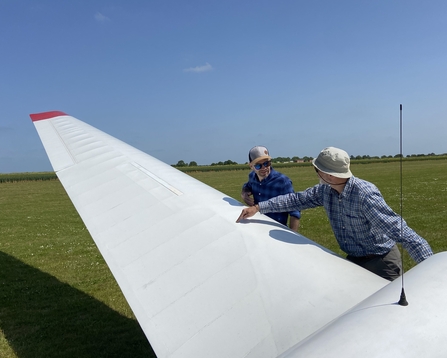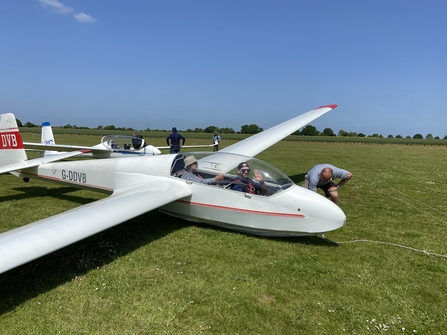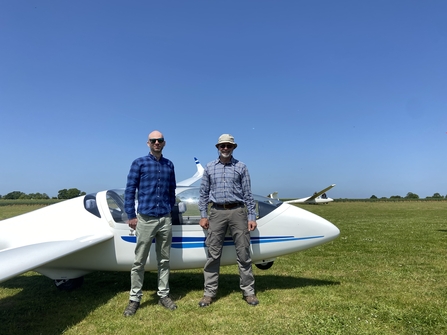Insects face mass extinction. They are a critical component of ecosystems and animal life is at risk. However, there is a need for more data to fully understand what is happening. Bugs Matter is an national citizen science survey which asks everyone to count the number of insect splats on their vehicle number plates after carrying out essential journeys as a marker of insect abundance. By repeating the survey every year, we can build a better picture of how our insect populations are faring to inform better conservation policy and practice.
Sometimes, the answers to these mysteries can be found in the most unexpected places. Recently, a novel collaboration began between Kent Wildlife Trust and Essex and Suffolk Gliding Club, bringing together two seemingly unrelated fields – wildlife conservation and aviation. The goal? To develop a unique Bugs Matter methodology for recording the number of bug splats on glider wings, offering valuable insights into insect populations soaring high above the ground. This partnership not only sheds additional light on insect abundance, but also highlights the importance of cross-disciplinary collaboration in understanding our environment, a key component underpinning Goal 2 of our Wilder Kent 2030 Strategy: Inspire and Collaborate. A few weeks ago, I joined Lawrence, Kent Wildlife Trust’s Ecological Data Analyst Lead and Bugs Matter project lead, to meet Adrian, passionate pilot of the Essex and Suffolk Gliding Club and dedicated citizen scientist.
Meeting Adrian and the science of gliding
Our journey began with a warm welcome from Adrian at the base of the gliding club. With a deep passion for gliding, Adrian delved into the science behind gliders – those sleek, motorless aircraft that ride the currents of the sky. Adrian explained the intricacies of glider design, the principles or aerodynamics, and how these aircraft can soar silently through the atmosphere, providing a birds-eye view of the world below. He told us that, during the summer, members of the gliding club regularly make cross-country flights, mostly between 2,000 and 5,000 feet altitude and typically between 100 to 300km in distance. They had noticed that, during the course of a flight, bug splats would accumulate on the leading edge of the glider wings. Glider pilots are very conscious of this as it reduces the performance of the glider by disruption the airflow over the wing. To mitigate this, pilots make a habit of cleaning the wings before every cross-country flight. As an avid citizen scientists who regularly takes part in Bugs Matter, Adrian had reached out to see if there was a way to develop a methodology to record bug splats on glider wings to provide information about insect numbers in the atmosphere high above ground level. He and his fellow pilots had observed a huge loss in the numbers of swallows and swifts in the last 15 years, and wanted to see whether if there was a reduction in insect numbers (their prey) that may be a contributing factor.



